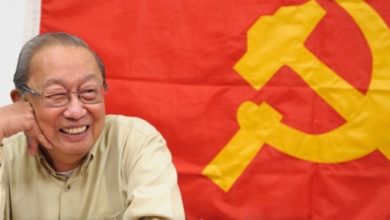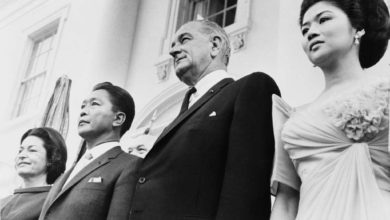On Jan. 22, 1987, anti-riot personnel from the Manila Western Police District, the Integrated National Police and the Philippine Marines opened fire on a peaceful rally of 15,000 peasants and their supporters demanding “genuine land reform” under the newly installed Corazón Aquino administration.
|
According to the Peasant Movement of the Philippines (KMP), which spearheaded the protest, on Jan. 15, 1987, hundreds of peasants organized a vigil in front of the Ministry of Agrarian Reform building in neighboring Quezon City. They were demanding the full implementation of the Comprehensive Agrarian Reform Program that President Aquino had promised.
Faced with the uncompromising position set by the government, talks between the KMP leadership and the Ministry of Agrarian Reform failed to reach an agreement. The peasants decided to press on with their struggle.
On Jan. 22, 1987, the peasants marched toward Malacanang Palace, the official presidential residence, to take their demands directly to President Aquino herself. They were joined by thousands of students from universities and colleges across Manila, and thousands more from progressive organizations and collectives in outlying communities.
Driven by Aquino’s earlier proclamation that her administration was an open government and the palace was a people’s palace, the militant but largely peaceful march moved on. The events that followed shocked the people and revealed the naked truth of Aquino’s empty promises.
As they approached the historic Mendiola Bridge—the scene of countless anti-Marcos demonstrations in the past—the marchers were confronted by a wall of riot police and soldiers in full battle regalia. Amidst the shouts of militant slogans, the sheer momentum of the spirited march created a surge that broke the police line. A police riot ensued. The full force of the machinery of repression came down on the demonstrators.
Danilo Ramos, then KMP secretary-general and the spokesperson for the Peasant Alliance from Bulacan Province, recounted that demonstrators fell as they were gunned down “like chickens in the wild.”
“They were heavily armed,” another peasant demonstrator recalled. “They were out to kill us. When we tried to flee, soldiers aboard civilian vehicles started shooting at us. We all shouted for them to stop, but our cries fell on deaf ears.”
It is a brutal yet common reality: Time and time again, the cries of the oppressed for equality and emancipation will fall on the deaf ears of the ruling class and its agents.
Aquino loyal to her class
Aquino, who came from a family of wealthy Filipino landlords, would not betray her class and easily acquiesce to the demands of the poor. Her administration was ushered into power by a massive popular uprising that toppled the Marcos fascist dictatorship. But in the final analysis it should be judged as a group of thieves composed of conscious agents of U.S. imperialism and elements of the comprador bourgeoisie—that is, capitalists willing to represent the interests of foreign capital in the Philippines. These combined forces robbed the victory from a people who heroically and militantly put their lives on the line in the legendary People Power Revolt.
Eventually Aquino promulgated quasi-reform laws and decrees meant to gloss over the corruption and ineffectiveness of her administration to improve the lot of the Filipino masses. As the people sank deeper and deeper into poverty, the country witnessed a groundswell of support for progressive and militant organizations.
Succeeding administrations, proving to be just as reactionary as their predecessors, failed to abate the anger of the people. The current Gloria Macapagal Arroyo regime is leading the pack to outdo the rapaciousness of even the fascist Marcos regime. Her administration reeks with corruption up to the highest levels. Since she took office, there have been more than 1,000 labor and peasant organizers, student and community leaders, and even ministers of the faith summarily executed or murdered. Over 300 enforced disappearances, and thousands of others have been displaced or killed in the countryside.Their crime: political activism.
Her subservient partnership with U.S. imperialism is hardly concealed. U.S. operatives have been used in the anti-insurgency campaign in the countryside. The annual U.S.-Philippines BALIKATAN military exercise is slated for April 2009. A contingent of more than 3,000 U.S. Army personnel remains in the country. These facts bring the sovereignty and independence of the Philippines into question.
Moreover, her strong adherence to neoliberal economic policies has wrought havoc upon the Philippine economy. With more and more Filipino workers and peasants being driven into abject poverty, the patience of the masses has been pushed to its limits.
Thousands of Filipinos are fleeing their homeland to seek a livelihood abroad. From war-torn Iraq to the brothels of Japan, the mushrooming Filipino diaspora faces humiliation and outright exploitation in unfamiliar lands. Human labor is poised to become the Philippines’ number one export.
Once again the progressive masses are on the march. The rising tide of resistance by the Filipino people to the oppressive U.S.-backed Arroyo regime could reach a critical mass and lead to a mass insurrection comparable to the people power of the 1980s that toppled the fascist U.S. puppet regime of Marcos.






